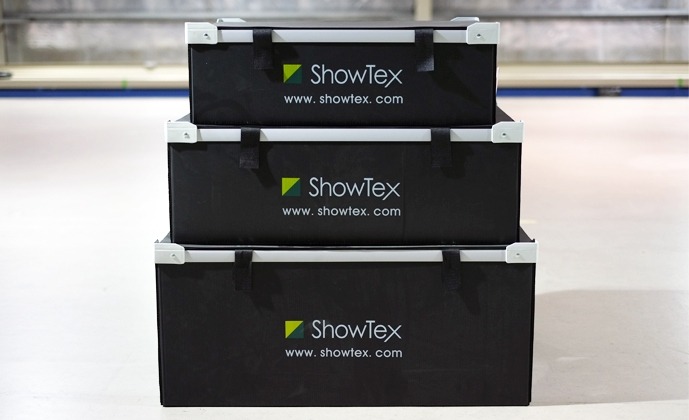About us
ShowTex is a worldwide leader in inventing, manufacturing and installing innovative flame retardant fabrics, tracks and motion control systems for achieving the creative vision of theatre, event and entertainment professionals.

This article is part of our series: Projection Screen Buyer Guides.
Please follow the guidelines below carefully. This way you will enjoy your screen problem-free for a long time.
Your screen has been manufactured with the greatest care. If you do notice any irregularities during unpacking, please contact us immediately before you start the installation.
Ideally, a screen should be rolled on a round tube that is long enough. Alternatively, if you wish to lower the shipping cost of screens, ShowTex can ship welded screens in a packaging box, always carefully folded.
PVC screens can harden in a cold environment and soften in a warm one. Installation should always happen in an area with a steady temperature of about 18 degrees Celsius.
The screen must acclimatised before unfolding. Unfolding an unacclimatised screen can lead to permanent damage such as folds or cracks. This damage can affect the quality of the projection.
Unless stated differently, all screens are hung up with the matt side facing the public.
During installation, always work on a clean, flat and empty floor. It is advised to place a plastic sheet on the floor to protect your screen during installation. Avoid walking over the screen at all times. When you start unfolding your screen, ensure you do not need to reposition. Dragging the screen along the floor can cause scratches.
The screen can be cleaned with tepid water and a gentle detergent. Hard stains can, only on rare occasions, locally be treated with an alcohol-based mixture. Always first test in a corner or on a sample piece! (depending on the product this can cause discolouration). Afterwards, rinse with plenty of water.
The screen should always be properly wrapped during transport to avoid any damage. Never tip the flight case!
Most projection screens are made from PVC. This is a thermoplastic containing a hard material as its base product. To make the screen flexible, plasticizers are being added. This is important to know in case you want to stick different materials onto the screen. Some types of glue can react to these plasticizers. Even a perfect adhesive, at first glance, can dissolve after 48 hours. Please test in advance. Have a great Show!
These screens may be stored folded, although long-term folding can lead to permanent creases if not tensioned correctly.
Rolling the screens for storage will help extend their lifespan.
Screens should typically be transported and stored at temperatures between 5°C and 30°C, with a relative humidity below 80%.
If the screens are very cold (e.g. after air transport), allow them to acclimatise before unpacking and installing, as cold cracks may occur otherwise.
The following guidelines should be followed when installing PVC screens:
Maintain a reasonably clean environment to prevent the build-up of dust and dirt.
Screens can be cleaned periodically using a soft brush or a damp cloth with water and a mild detergent. Wipe vertically with gentle pressure.
Using any other cleaning method may cause irreversible damage to the surface.
Never use abrasive materials or harsh chemicals such as acids, bleach or solvents.